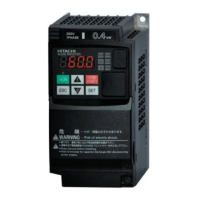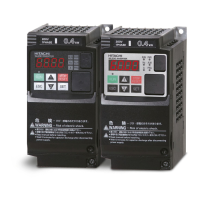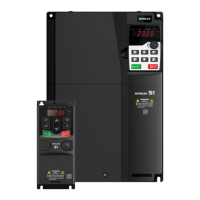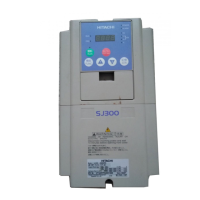Chapter 9 Inverter Functions
9-7-15
9.7.9
Switching to Commercial Power Supply (Commercial Power Supply Change)
How to use the inverter to start a motor and then use a commercial power supply for continuous
operation?
How to switch between a commercial power supply and the inverter for driving the motor?
A commercial power supply change function is available for systems with a large moment of
inertia of the motor load. This feature allows the use of the inverter to drive acceleration and
deceleration, and a commercial power supply to drive the motor at constant speeds.
When "Commercial power supply change [CS] (14)" is turned on with the RUN command on, the
inverter output is shut off and the motor starts free run. When [CS] terminal is turned off while
on, the inverter matches the command frequency to the motor rotation speed (Active frequency
matching restart at the frequency of the previous output interruption.) after the "Retry wait time
after instantaneous power failure/undervoltage error [b003]" has elapsed.
The [CS] terminal behaves in the same way as when the [FRS] terminal is turned on/off with
"Restart mode after FRS release [b088]" as the "Active frequency matching restart (02)" and
"Active frequency matching restart speed selection [b030]" as the "Output frequency at shut
down (02)". For details, refer to "9.7.4 Starting with Active Frequency Matching".
Commercial power supply change [CS]:
This function is used when switching to a commercial
power supply. When [CS] is turned on, inverter output is
shut-off.
◼
Example of connection diagram and timing chart for commercial power supply switching
For FWY, RVY, and CSY, use a low voltage relay.
Apply a mechanical interlock between MC3 and MC2. Otherwise, the inverter may be damaged.
The electrical leakage breaker ELCB tripping due to a ground fault, or some other reason, will
also render the commercial power circuit inoperable. If a backup is required, connect a separate
commercial power circuit to MC2.

